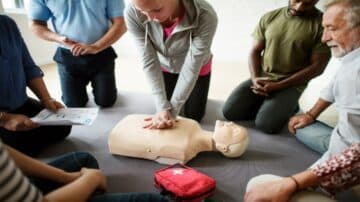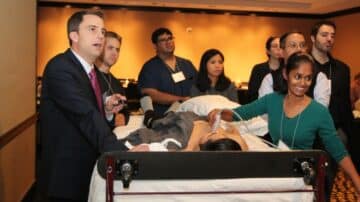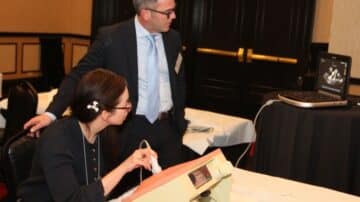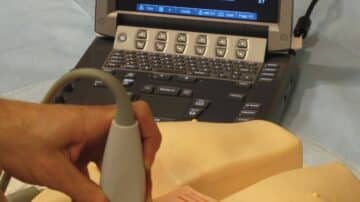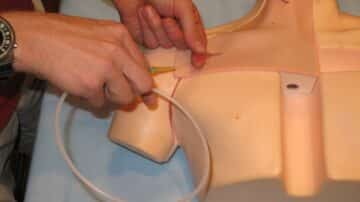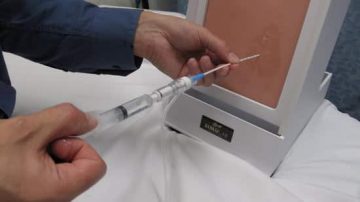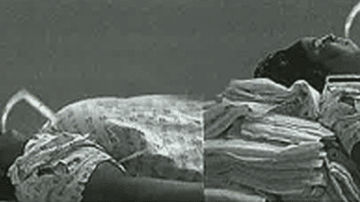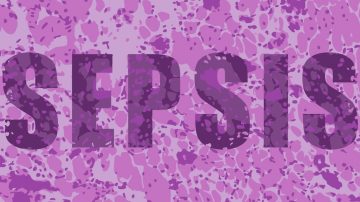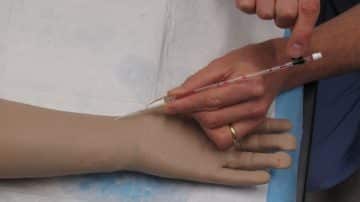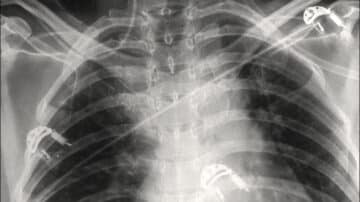Critical emergency skills are an important tool in a healthcare provider’s arsenal. They must be able to safely perform emergency procedures to save lives when faced with a critical situation. However, once they finish their studies and training, many physicians…
Read MoreDelays to hospital inpatient admission in excess of five hours from arrival at an Emergency Department (ED) lead to a mortality rate of 8.71%. This increases by another 8% in cases where admission is delayed beyond six to eight hours. …
Read MoreUltrasound-guided paracentesis is a common hospital procedure that medical professionals perform to drain ascites in patients with advanced cirrhosis. It has a low bleeding risk and is used for diagnostic or therapeutic purposes. Although paracentesis is generally a safe procedure,…
Read MoreWhile vasopressors are typically administered through a central venous catheter (CVC), peripheral intravenous (PIV) administration is becoming more common in clinical practice. The safety of this administration method is now well-established and is a good alternative to CVC placement for…
Read MoreMore Tags – Alternatives to PICC, alternatives to picc line, Internal Jugular Central Line, PICC in patients who may need hemodialysis, PICC in patients with chronic kidney disease, picc line for dialysis, picc line placement, PICC line placement for long-term vascular access, Subclavian Central Line
A peripherally inserted central catheter (PICC) line refers to a type of central line that is used for long-term vascular access in patients with chronic kidney disease (CKD). However, the American Board of Internal Medicine’s (ABIM) Choosing Wisely campaign recommends…
Read MoreCentral line insertion can be a complicated process that requires proper training to minimize procedural risks. One of its most important aspects is the proper positioning of the patient during the procedure to ensure safety and success. Patients may also…
Read MoreMore Articles – Arterial line, Cardiovascular diseases, Central line, Chest Tube, Emergency Procedures, Endotracheal Intubation, Events, FAST Exam, Intraosseous line, King Tube, Laryngeal Mask Airway, Lumbar Puncture, Mechanical Ventilation, Medical General, medical procedures, Needle Decompression, Paracentesis, Procedural Sedation, RUSH Exam, Thoracentesis, Ultrasound-Guided Peripheral IV
Physicians, physician associates (PAs), and nurse practitioners (NPs) need to be adept in a range of essential medical emergency procedures that they must perform in an inpatient settings. These bedside procedures are accomplished readily, but only if you have the…
Read MoreA Continuing Medical Education (CME) Course is designed for doctors, nurses, nurse practitioners, physician associates and other healthcare professionals who want to learn more about certain topics in medicine. The primary goal of CME is to improve the quality of…
Read MoreThe emergency room (ER) is an essential area of any hospital because it often deals with life-and-death situations. How medical personnel respond significantly affects the prognosis of patients who are in need of urgent care. As a medical professional, experience…
Read MoreMore Articles – Cardiovascular diseases, Central line, Featured, medical procedures, Nephrology, Respiratory diseases, Thoracentesis
There are two myths that have persisted about thoracentesis and pleural fluid analysis that must be dispelled. The first myth is that a large volume thoracentesis should not remove more than 1,500 mL fluid due to the risk of re-expansion…
Read MoreMorbidly obese patients can pose numerous challenges when it comes to airway management. Morbid obesity can make vascular access more difficult and you need good vascular access prior to any attempts at safe airway management. In addition, morbid obesity can…
Read MoreDoes Simulation Based Training Improve Central Line Success Rates? Simulation-based procedural training has become increasingly popular in academic medical centers and among medical trainees. Limited data has suggested that simulation based training improves success rates and safety, but evidence has…
Read MoreMore Tags – antibiotic stewardship, antibiotics, Arterial Line, central line, featured, sepsis, sepsis management, septic shock
Timely administration of broad-spectrum antibiotics in septic patients saves lives. Though this has been demonstrated in hundreds of clinical investigations over the last few decades, antibiotics remain the most controversial topic in the management of severe sepsis and septic shock. …
Read MoreAggressive fluid administration is a hallmark of septic shock management and has been espoused by the Surviving Sepsis Campaign and is a part of the CMS SEP-1 sepsis bundle. The sepsis bundle includes administration of 30 ml/kg crystalloid bolus (LR…
Read MoreMalpositioned central venous catheters occurs in about 7% of central line placements. A malpositioned central line is any central venous catheter where the tip is located anywhere other than the superior vena cava (SVC) for internal jugular lines or subclavian…
Read MoreCategories
- ACLS (1)
- Arterial line (33)
- Cardiovascular diseases (77)
- Central line (55)
- Chest Tube (39)
- Dermatology (4)
- Emergency Procedures (138)
- Endocrinology (6)
- Endotracheal Intubation (36)
- Events (24)
- FAST Exam (12)
- Featured (112)
- Featured Procedure (42)
- Gastrointestinal diseases (32)
- Ginecology (3)
- Glidescope Intubation (21)
- Hematology (33)
- Hospital Procedures (85)
- Infections (32)
- Intraosseous line (8)
- King Tube (27)
- Laryngeal Mask Airway (18)
- Lumbar Puncture (36)
- Mechanical Ventilation (34)
- Medical General (95)
- medical procedures (258)
- Needle Decompression (6)
- Nephrology (11)
- Neurological diseases (12)
- Oncology (4)
- Paracentesis (32)
- Pericardiocentesis (3)
- Procedural Sedation (19)
- Respiratory diseases (85)
- RUSH Exam (8)
- Thoracentesis (37)
- Traumatology (24)
- Travel (27)
- Ultrasound-Guided Peripheral IV (13)

